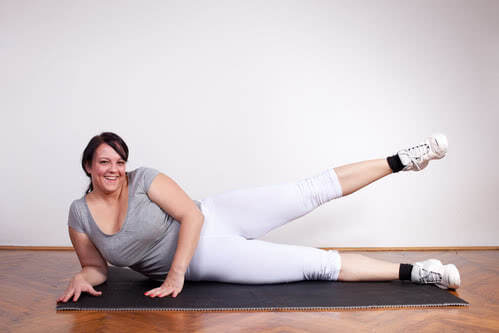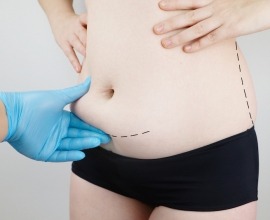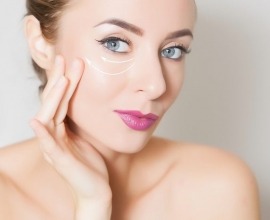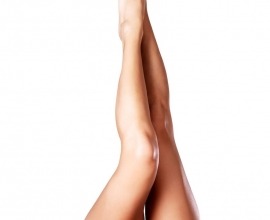Decoding Liposuction – It's Many Forms and Results Revealed
These days liposuction is one of the most popular forms of aesthetic surgery around, with more than 363,000 operations performed in the USA alone in 2013(1). Over in Europe, London has recently proved to be one of the top destinations for the procedure by developing a reputation for excellence and attracting a host of top-dollar clients from all over the world(2). If fat is the most common target of aesthetic surgery, then perhaps it is not so surprising that liposuction has reached such a zenith of popularity.
Furthermore, the range of prices that have appeared as a result of the global plastic surgery market has made liposuction ever more affordable, opening up its audience and even creating the submarket of medical tourism. It seems that in 2018 the procedure is only on the rise, now competing with a host of other aesthetic surgery procedures that have developed with the increasing efficiency of medical technology. Indeed, the field itself has also expanded, and Liposuction itself is not so simple to define.
Liposuction now includes a whole host of fat fighting techniques, such as Tumescent, BodyTite, BodyJet and Laser methods of surgery. If you're a client thinking about liposuction, being confronted with this list of alien sounding titles doesn't exactly help, and finding a single definition can prove tricky. If all you want is to shave off some pounds, how are you to know which will be most effective? Does your body type suit a specific method? That's where this article steps in, and these are the questions we aim to answer. Take note, as we will detail the differences between liposuction procedures in the simplest possible manner whilst making sure you get the knowledge you need to make the right decision.

Let's start with tumescent liposuction. Why?
Because this is one of the most common methods around, and has strong reasons for being one of the most preferable in surgeries world wide. In this method a fluid is injected into masses of fat that 'tumesces' it – in other words the capillaries shrink and the fat becomes hard, enabling the surgeon to remove it (something that is tumescent simply means something that is hard and firm). The fluid itself contains lidocaine, a strong local anaesthetic, and typically epinephrine, which tumesces the fat(3). The benefit of this is that you do not need to undergo general anaesthetic for the procedure, it can be done in full consciousness thus allowing for a quicker recovery, and none of the post-op drowsiness. Furthermore, there is a less risk of blood loss in this method due to the hardening of the fat which eases its removal and leaves less blood under the skin once removed. It might not be a surprise to hear that this method was developed in response to the dangerous earlier methods of liposuction that often resulted in hospitalisation or blood transfusion due to toe blood loss(4). Because of the safety and ease of this method it has become a worldwide standard, and this is what you can expect at a basic level. So what are the alternatives? Why improve a proven method...?
Tumescent liposuction is already favoured for being minimally invasive but BodyJet, or water-assisted liposuction, lays claim to being the most 'comfortable' form of the procedure. Like the latter, it does not require general anaesthetic, but in this case the method of fat removal is really rather different. Instead of hardening the fat and removing it as a solid, a jetline stream of saline fluid is used to dislodge fat cells under the skin, which are simultaneously taken up through suction(5). Because water is the main feature of this method, less chemicals enter the body and healing time is even further reduced, patients generally reporting a very quick recovery. Water-assisted liposuction is at the forefront of plastic surgery technology, and various clinics express a preference for this method(6). The reason for this is that surgeons are given greater control over what they are doing, with the ability to control the force of the water jet and selectively navigate the jet towards certain areas of fat. As you might expect, this method generally costs more than the tumescent method, which is an industry standard. The reason for an increased price of course comes down to the technology involved and enhanced benefit for the patient. If you like the sound of the latest technology as part of your plastic surgery choice, our next option pushes developments even further.
This next method, BodyTite, has all the benefits of the previous plus one important extra. The goal behind this method is to solve a common problem in liposuction, which is loose skin. Once fat is removed many complain of having sagging skin where the fat once was. Simply, BodyTite aims to firm up your skin immediately after removing the fat, so that your surgery ticks all the boxes in one go. How does it work? The method is also different is that it does not use water or tumescent chemicals, instead your fat is melted after a local anaesthetic is administered. Very soon after, a radio frequency is administered both under and above your skin, designed to create heat that stimulate collagen growth. The collagen subsequently firms up your skin where it may otherwise be loose(7). Whilst results are good, there are mixed views on the discomfort of the surgery according to different patients(8).
Laser liposuction uses a similar method to BodyTite, without the radio frequency to tighten your skin. Here a laser is inserted under your skin, following general or local anaesthetic depending on the case, which softens the fat through heat before being removed via suction(9). Laser liposuction is one of the more experimental procedures, with a mixed opinion from the medical community and client community. One of the reasons for scepticism is the risk of burns or uneven skin tone, due to the intensity of the laser that is used, varying in each case(10).

Our rundown in this article has covered the basic forms to the most advanced and experimental, and the information is laid out for you to compare. One thing that you should consider with your doctor before choosing any of these methods is your body type and state of health, which will of course change what is the best option for you, no matter which sounds the most appealing. By this time next year, you can probably expect another article covering yet more methods of liposuction (!), but for now we leave you with this curated selection.
Sources:
1 https://www.littlerockcosmeticsurgery.com/4-reasons-liposuction-is-most-popular-cosmetic-surgery/
3 https://emedicine.medscape.com/article/1835414-overview#a1
4 https://www.liposuction.com/tumescent-lipo.html5 https://www.liposuction.com/water-jet-assisted.html
6 https://www.humanmed.com/en/products/body_jet_evo
7 http://harleystreetskinclinic.com/bodytite/
8 https://www.realself.com/forum/bodytite-procedure
9 http://www.yourplasticsurgeryguide.com/laser-liposuction/
10 https://www.realself.com/question/what-coollipo-laser-lipolysis














